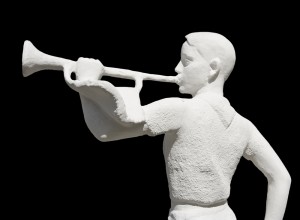
Anxiety disorders frequently co-occur with alcohol dependence. Diagnosis of alcohol dependence is approximately two to four times more likely in individuals diagnosed with anxiety disorders (Hasin et al., 2007). The co-occurrence of these disorders has been associated with more severe symptoms, higher rates of relapse and a corresponding increase in using mental health services (Kessler, 1996).
Certain forms of psychotherapy, such as cognitive behaviour therapy (CBT) might be limited by comorbid alcohol dependency. In contrast, behavioural programmes designed for treating alcohol dependence may not reduce anxiety. Therefore the consideration of pharmacotherapy as a treatment option is suggested.
Some drugs show promise in the treatment of anxiety and comorbid alcohol dependence:
- Selective serotonin re-uptake inhibitors (SSRIs) are used in the treatment of anxiety disorders and there is some evidence for favourable outcomes in those with less severe alcohol dependence (Pettinati, 2000).
- Naltrexone (an opioid receptor antagonist) is a drug used for relapse prevention in alcohol disorders which shows some promise with post-traumatic stress disorder (PTSD) (Lubin, 2002).
However, the picture is not a straightforward one and evidence for the use of drugs is mixed. The expert view is that treatment strategies that combine medication with psychotherapy will be most effective, but again support for the usefulness of this combination is not clear.
In the current literature there are a number of shortcomings and the authors of a recent Cochrane review (Ipser et al, 2015) emphasise a systematic review and meta-analysis is needed to quantify the extent of this.

People diagnosed with anxiety disorders are 2-4 times more likely to also be diagnosed with alcohol dependence.
Methods
The Cochrane reviewers searched for all randomised controlled trials (RCTs) for treating anxiety disorders with comorbid alcohol use disorders (according to DSM-III, DSM-IV OR DSM-IV-TR criteria). All medication interventions in which the drug was administered to treat anxiety disorders were eligible for inclusion.
Primary outcomes were clinical treatment response (assessed by the Clinical Global Impressions- Improvement scale (CGI-I)), the reduction of symptom severity and the acceptability of medication. Secondary outcomes were scores on rating scales for disorders other than the primary anxiety disorder; such as abstinence and reduction of alcohol use and reduction of comorbid symptoms of depression.
Results
Five RCTs were eligible for inclusion in the review, with a sample size of 290 participants. Four trials assessed the efficacy of sertraline or paroxetine (selective serotonin re-uptake inhibitors (SSRIs)) and one trial investigated the efficacy of buspirone (5-hydroxytryptamine (5-HT) partial agonist). Interventions varied in duration from eight to 24 weeks, and the sample was mostly male (70%).
Primary outcomes
- There was preliminary support for the efficacy of paroxetine in improving clinical response in people with social anxiety disorder (SAD) (RR (risk ratio) = 2.23, 95% CI (confidence interval) = 1.13 to 4.41). More than twice as many people with SAD responded to paroxetine (57.6%) than placebo (25.85%) after a mean of 12 weeks of treatment.
- Study investigators reported that buspirone was superior to placebo in reducing the severity of anxiety symptoms over 12 weeks.
- No evidence of efficacy in reducing anxiety was observed for paroxetine (mean difference (MD) =14.70, 95% CI = -33.00 to 3.60) and sertraline.
- There was no evidence that the severity of anxiety disorder symptoms were reduced after treatment with medication. The one exception was busprione, but evidence of reporting bias in this study was emphasised by authors.
- There was high evidence of attrition in the studies (43.1%) and high frequencies of sexual dysfunction were reported with SSRIs.
Secondary outcomes
- There were few effects on drinking outcomes reported.
- There was no evidence for a reduction in symptoms of depression.
- There was no data on quality of life or functional disability.

You’ve heard this clarion call before in the woodland: more large and rigorous RCTs needed!
Discussion
This Cochrane review concluded that the evidence base for pharmacotherapy for treating comorbid alcohol use disorders and anxiety is inconclusive.
Authors were unable to retrieve sufficient data to address the majority of initially identified outcomes of interest and although there was a response to the SSRI paroxetine reported, the evidence was of very low quality. Evidence quality was assessed by authors using GRADE (based on design limitations, indirectness of evidence, inconsistency and imprecision of results and a high probability of publication bias).
Limitations
Further problems with the included studies are highlighted in the review:
- Most studies restricted their inclusion to those without other substance use disorders, despite a high degree of comorbidity between drugs and alcohol in a ‘real life’ sample.
- The sample was majority male, limiting the strength of applicability of conclusions to a female population.
- Selective reporting of outcomes may have also biased conclusions; this was particularly the case in the buspirone study (Tollefson et al., 1992).
- The high attrition rate observed in the studies (43.1%) is a cause for concern. This may mean biased outcomes if drop-outs were due to intervention components, but also because of the small sample sizes in the study, the likeliness that medication effects will be detected is decreased.
- The presence of possible sources of bias could not be tested formally due to the small number of studies.
Conclusion
Good quality evidence is seriously lacking. Few rigorously designed RCTs were identified assessing the effectiveness of medication in people with comorbid anxiety and alcohol use disorders. The Cochrane reviewers stress that there is an urgent need for additional controlled pharmacotherapy trials in this population.

We only have very low quality evidence about the effectiveness of medication for treating anxiety and comorbid alcohol use disorders.
Links
Primary paper
Ipser JC, Wilson D, Akindipe TO, Sager C, Stein DJ. Pharmacotherapy for anxiety and comorbid alcohol use disorders. Cochrane Database of Systematic Reviews 2015, Issue 1. Art. No.: CD007505. DOI: 10.1002/14651858.CD007505.pub2.
Other references
Hasin, D., Stinson F., Ogburn, E. & Grant, B. (2007) Prevalence, correlates, disability, and comorbidity of DSM-IV alcohol abuse and dependence in the United States: results from the National Epidemiologic Survey on Alcohol and Related Conditions. Archives of General Psychiatry, 64, 830–42. [PubMed abstract]
Kessler, R., Nelson, C., McGonagle K., Edlund, M., Frank R. & Leaf P (1996) The epidemiology of co-occurring addictive and mental disorders: implications for prevention and service utilization (PDF). American Journal of Orthopsychiatry, 66, 17–31.
Lubin, G., Weizman, A., Shmushkevitz, M. & Valevski, A. (2002) Short-term treatment of post-traumatic stress disorder with naltrexone: an open-label preliminary study. Human Psychopharmacology, 17, 181–5. [PubMed abstract]
Pettinati, H., Volpicelli, J., Kranzler, H., Luck, G., Rukstalis, M. & Cnaan, A. (2000) Sertraline treatment for alcohol dependence: interactive effects of medication and alcoholic subtype. Alcoholism, Clinical and Experimental Research, 24, 1041–9. [PubMed abstract]
Tollefson, G., Montague-Clouse, J. & Tollefson, S. (1992) Treatment of comorbid generalized anxiety in a recently detoxified alcoholic population with a selective serotonergic drug (buspirone). Journal of Clinical Psychopharmacology, 12, 19–26. [PubMed abstract]

Pharmacotherapy for anxiety and comorbid alcohol use disorders: Natasha Clarke summarises a recent Cochrane re… http://t.co/tKNyqBSUbF
@Mental_Elf important combination to consider, also need to assess interaction between substances see @advancesDD http://t.co/Ios7LW7Ge6
Pharmacotherapy for anxiety and comorbid alcohol use disorders http://t.co/je7E8pgOqt #MentalHealth http://t.co/8A0skkolXA
Pharmacotherapy for anxiety and comorbid alcohol use disorders https://t.co/0gtymy6N4n via @sharethis @tash_c135
Pharmacotherapy for anxiety and comorbid alcohol use disorders https://t.co/FmZUDC3vZD by @tash_c135
Today’s blog by @tash_c135 highlights the dearth of evidence for treating anxiety & comorbid alcohol use disorders http://t.co/M681LFrloi
RT @Mental_Elf: Read our summary of the recent @Cochrane_CCDAN review on medication for anxiety & comorbid alcohol use disorders http://t.c…
Don’t miss: Pharmacotherapy for anxiety and comorbid alcohol use disorders http://t.co/M681LFrloi #EBP
“@Mental_Elf: Don’t miss: Pharmacotherapy for anxiety and comorbid alcohol use disorders http://t.co/cnvCb2G34Z #EBP” @yvonjansma
Mental Elf: Pharmacotherapy for anxiety and comorbid alcohol use disorders http://t.co/Spl4G4nPQQ
Pharmacotherapy for anxiety & comorbid alcohol use disorders http://t.co/Hw4dFPfE8i
@VassilikiSin that’s weird, worked yesterday! Try this- http://t.co/DGADLjJmOm
Pharmacotherapy for anxiety and comorbid alcohol use disorders https://t.co/H2XIRIr8PA via @sharethis
Pharmacotherapy for anxiety and comorbid alcohol use disorders https://t.co/AnDcpXIvQ0 via @sharethis
Pharmacotherapy for anxiety and comorbid alcohol use disorders https://t.co/zEgrC4b5Jl via @sharethis
[…] Pharmacotherapy for anxiety and comorbid alcohol use disorders (Mental Elf) […]